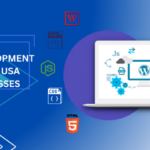Digital Twin Market was valued at USD 17.09 Billion in 2023 and is projected to grow from USD 22.77 billion in 2024 to USD 160.56 billion by 2031, exhibiting a CAGR of 32.2% during the forecast period.
Explore Comprehensive Analysis @ https://www.extrapolate.com/Information-Technology-Communication-IoT/digital-twin-market/26033
Digital twins, virtual representations of physical assets, processes, or systems, are revolutionizing how businesses operate, optimize performance, and make strategic decisions. This comprehensive report forecasts a period of unprecedented growth for the digital twin market, driven by the escalating need for enhanced operational efficiency, predictive maintenance capabilities, product lifecycle management optimization, and the increasing sophistication of enabling technologies such as the Internet of Things (IoT), artificial intelligence (AI), machine learning (ML), cloud computing, and augmented reality/virtual reality (AR/VR).
Top Companies in the Digital Twin Market
- Siemens
- General Electric (GE)
- IBM
- Microsoft
- Dassault Systèmes
- PTC
- ANSYS
- Bentley Systems
- Honeywell International
Key Findings from the Report:
Exponential Market Growth: The global digital twin market is projected to experience remarkable expansion over the forecast period (2024-2034), exhibiting a robust Compound Annual Growth Rate (CAGR) of [Insert Specific CAGR Percentage from Research Data]. This growth is fueled by increasing awareness of the tangible benefits offered by digital twin technology and decreasing barriers to adoption.
Major Innovations
Integration with Edge Computing: Edge computing is being combined with digital twin technologies to allow high-speed data processing at the source, minimizing delay and optimizing immediate decision-making.
Use of AI and Machine Learning: AI and machine learning algorithms are being incorporated into digital twin systems to upgrade predictive analytics, making way for more precise forecasting and process optimization.
Cloud-Based Solutions: The emergence of cloud computing has made digital twin platforms more extensible, enabling live processing of data and distance monitoring.
Cloud Computing: Cloud platforms offer the scalable infrastructure and computing power necessary to host and process the large volumes of data associated with digital twins. Cloud-based solutions enhance accessibility and reduce the upfront investment required for implementation.
Augmented Reality (AR) and Virtual Reality (VR): AR and VR technologies provide immersive interfaces for interacting with digital twins, enabling visualization, remote collaboration, and enhanced training experiences. For instance, technicians can use AR overlays to guide them through complex maintenance procedures based on the digital twin.
Regional Insights:
The report provides a detailed regional analysis of the digital twin market, highlighting key trends and growth opportunities in North America, Europe, Asia Pacific, Latin America, and the Middle East & Africa.
North America: Currently holds a significant share of the global market due to early adoption and strong technological infrastructure.
Europe: Demonstrates strong growth potential, driven by government initiatives focused on digitalization and industrial automation
Asia Pacific: Expected to witness the highest growth rate during the forecast period, fueled by rapid industrialization, increasing investments in digital transformation, and a large manufacturing base.
Latin America and the Middle East & Africa: Present significant growth opportunities as these regions increasingly recognize the value proposition of digital twin technology.
Emerging Trends:
The digital twin market is characterized by several emerging trends that are shaping its future direction:
Federated Digital Twins: This trend involves connecting multiple independent digital twins to create a more comprehensive and integrated view of complex systems. Federated digital twins enable collaboration and data sharing across different organizational units or even between different organizations.
Digital Twin Platforms: The rise of integrated digital twin platforms that offer a comprehensive suite of tools and capabilities for building, deploying, and managing digital twins is gaining momentum. These platforms simplify the development and deployment process.
Future Outlook:
The future of the digital twin market looks exceptionally promising. As enabling technologies continue to advance and the benefits of digital twins become more widely recognized, adoption is expected to accelerate across industries. The focus will likely shift towards more sophisticated and intelligent digital twins that can provide deeper insights, enable greater automation, and contribute significantly to business resilience and sustainability. The development of industry standards and the emergence of more user-friendly platforms will further democratize access to this transformative technology.
Related Reports and Latest Industry Development News:












